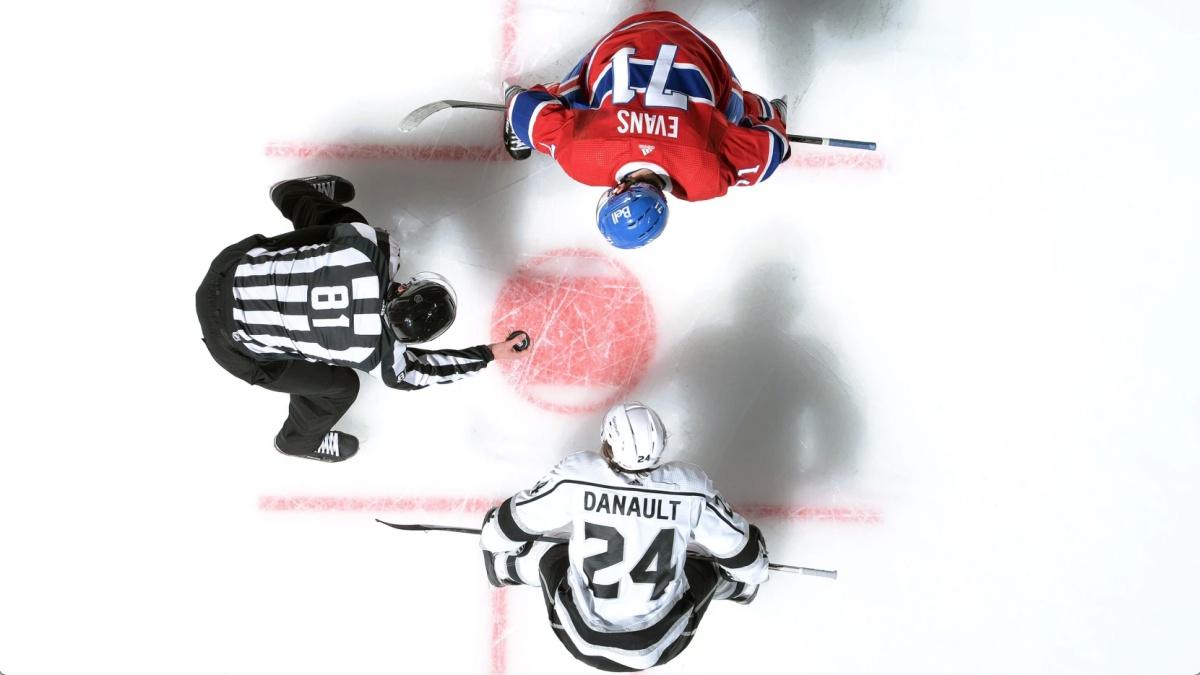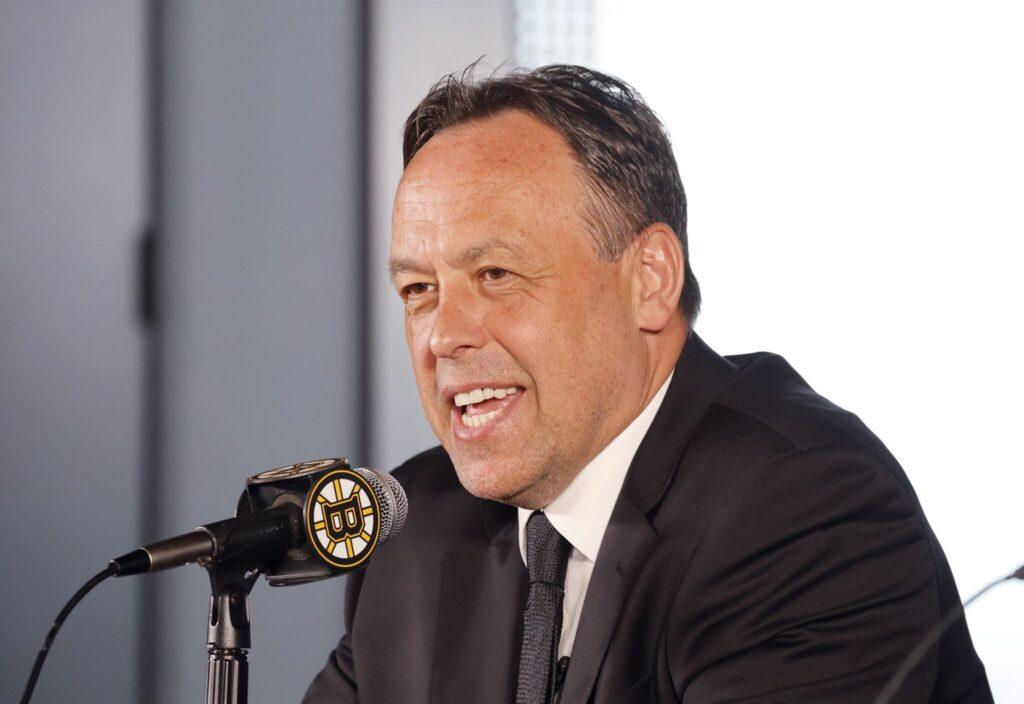
The debate surrounding the Montreal Canadiens has narrowed in on whether the team should extend pending unrestricted free agent (UFA) center Jake Evans or not. Truthfully, there are valid arguments on both sides of the discussion. The decision hinges on two key factors:
- What will the trade market look like for a player like Evans?
- What will the market dictate his value to be for his next contract, and will the Canadiens consider that price affordable?
To gain some clarity, we’ll analyze Evans’ impact, compare him to similar players, and determine his potential contract value based on current trends. But first, let’s set the table.
His Impact
This season, the Montreal Canadiens boast the fifth-best penalty kill in the NHL. The primary forwards responsible for this success? Jake Evans and Joel Armia on one pair, with Christian Dvorak and Josh Anderson on the other.
Remarkably, three of these four players are pending UFAs, while the fourth—Josh Anderson—was once widely criticized by fans. Then add David Savard on defense, also a pending UFA rumoured to be traded by trade deadline.
While power plays often receive more attention, penalty killing is just as vital to success. The old adage remains true: to win hockey games, you need to score more goals than your opponent. But equally important is minimizing the goals you allow—especially when shorthanded. Evans’ contributions on the penalty kill exemplify his defensive value, a role that may not grab headlines but wins games.
Evans’ Next Contract
In October 2021, Evans signed a three-year extension worth $5.1 million, carrying a $1.7 million annual cap hit. As he approaches unrestricted free agency, he will understandably seek financial security—both in term and salary.
Unlike star players who can leave money on the table because of lucrative past or future earnings, role players like Evans must capitalize on their UFA status. Free agency is often their best (and sometimes only) chance to secure a significant payday.
Many fans mistakenly compare salaries based purely on dollar amounts, overlooking the key factor of the salary cap at the time of signing. Agents, however, prioritize what percentage of the cap their client commands. For instance, if a player signed for 4% of the cap when it was $81.5 million, that same 4% would equate to far more money under a projected $92 million cap next season.
The challenge for management lies in finding a balance between investing in defensive specialists like Evans while also reserving funds for offensive players who command top dollar. While defensive play can often be taught, offensive instincts are harder to develop—this season’s Josh Anderson serves as a prime example.
The Comparison Process
To determine Evans’ market value, I focused on centermen who share similar ice time, play key roles like penalty killing, and frequently take faceoffs—an essential responsibility for centers.
| AGE | PTS/GP | TOI/GP | SH TOI/GP | FO TOTAL | FO% | CAP HIT | |
| 2024-25 | 28 | 0.54 | 16:00 | 3:12 | 362 | 49.1 | $1.7M |
| CAREER | 0.36 | 14:43 | 2:28 | 1,793 | 50.7 |
First, I ensured all players compared were primarily taking faceoffs this season, as some are listed as centers but don’t regularly play the position. This step created an accurate list of 25 comparable players based on role and statistics.
Next, I removed players who have not yet reached UFA status. Players still under team control, like Isac Lundestrom (ANA) and Ryan McLeod (BUF), tend to carry artificially lower contracts. I also excluded players like Josh Norris (OTT) and Robert Thomas (STL), whose extensions beyond their UFA years inflate their current cap percentages.
|
NAME |
TEAM |
AGE |
PTS/GP |
TOI/GP |
SH TOI/GP |
FO TOTAL |
FO% |
CAP HIT |
TRADE CLAUSE |
TERM |
% CAP AT SIGN. |
YEAR SIGNED |
|
Charlie Coyle |
BOS |
32 |
0.29 |
17:29 |
2:35 |
328 |
50.3 |
$5.25 |
M-NTC |
6 years |
6.4% |
2019 |
|
Mikael Backlund |
CGY |
35 |
0.44 |
19:33 |
2:27 |
579 |
48.0 |
$4.50 |
NMC |
2 years |
5.4% |
2023 |
|
Jordan Staal |
CAR |
36 |
0.35 |
15:09 |
2:19 |
457 |
55.8 |
$2.90 |
NMC |
4 years |
3.5% |
2023 |
|
Jason Dickinson |
CHI |
29 |
0.31 |
15:39 |
2:33 |
391 |
46.3 |
$4.25 |
2 years |
5.1% |
2024 |
|
|
Adam Henrique |
EDM |
34 |
0.35 |
14:40 |
1:44 |
277 |
52.7 |
$3.0M |
2 years |
3.6% |
2024 |
|
|
Phillip Danault |
LAK |
31 |
0.50 |
17:21 |
2:01 |
398 |
54.0 |
$5.50 |
NMC |
6 years |
6.7% |
2021 |
|
Joel Eriksson Ek |
MIN |
27 |
0.59 |
19:06 |
1:44 |
431 |
49.9 |
$5.25 |
M-NTC |
8 years |
6.4% |
2021 |
|
Jean-Gabriel Pageau |
NYI |
32 |
0.40 |
17:42 |
1:29 |
290 |
60.3 |
$5.00 |
NTC |
6 years |
6.1% |
2020 |
|
Vincent Trochek |
NYR |
31 |
0.50 |
21:38 |
2:14 |
447 |
60.9 |
$5.63 |
NMC |
7 years |
6.8% |
2022 |
|
Josh Norris |
OTT |
25 |
0.68 |
18:56 |
2:23 |
338 |
53.0 |
$7.95 |
M-NTC |
8 years |
9.6% |
2022 |
|
Noel Acciari |
PIT |
33 |
0.19 |
13:54 |
2:37 |
235 |
49.4 |
$2.00 |
M-NTC |
3 years |
2.4% |
2023 |
|
Alexander Wennberg |
SJS |
30 |
0.52 |
18:39 |
1:24 |
411 |
50.1 |
$5.00 |
NTC |
2 years |
5.7% |
2024 |
|
Mikael Granlund |
SJS |
32 |
1.07 |
20:44 |
2:02 |
367 |
48.0 |
$5.00 |
4 years |
6.1% |
2021 |
|
|
Chandler Stephenson |
SEA |
30 |
0.65 |
19:57 |
2:15 |
521 |
52.8 |
$6.25 |
NMC |
7 years |
7.1% |
2024 |
|
Radek Faksa |
STL |
30 |
0.26 |
13:11 |
1:34 |
281 |
54.5 |
$3.25 |
M-NTC |
5 years |
4.0% |
2020 |
|
Robert Thomas |
STL |
25 |
1.00 |
20:54 |
1:21 |
302 |
57.6 |
$8.13 |
NTC |
8 years |
9.9% |
2022 |
|
Brayden Schenn |
STL |
33 |
0.52 |
17:53 |
1:20 |
402 |
50.0 |
$6.50 |
NTC |
8 years |
8.0% |
2019 |
|
Anthony Cirelli |
TBL |
27 |
1.00 |
19:17 |
2:33 |
411 |
51.6 |
$6.25 |
NTC |
8 years |
7.6% |
2022 |
|
Kevin Stenlund |
UTA |
28 |
0.16 |
14:20 |
2:50 |
307 |
58.6 |
$2.00 |
2 years |
2.3% |
2024 |
|
|
Teddy Blueger |
VAN |
30 |
0.42 |
14:36 |
2:07 |
308 |
49.7 |
$1.80 |
M-NTC |
2 years |
2.0% |
2024 |
|
Nic Dowd |
WAS |
34 |
0.36 |
15:31 |
2:35 |
403 |
47.9 |
$1.30 |
3 years |
1.6% |
2021 |
|
|
Adam Lowry |
WPG |
31 |
0.63 |
15:23 |
1:58 |
486 |
48.6 |
$3.25 |
M-NTC |
5 years |
4.0% |
2021 |
For fairness, I removed the top two earners (Thomas and Norris) and the bottom two (Dowd and Blueger) to avoid skewing the average too much.
Results
The data revealed that comparable players sign contracts averaging $4.58 million per season for an average term of approximately five years (4.83). Additionally, 78% of these contracts include some form of trade protection, such as a no-movement clause, a full no-trade clause, or a modified no-trade clause limiting trade destinations.
If this trend continues—as Evans’ agent will undoubtedly aim to ensure—you can expect Evans to command a five-year deal worth approximately 4.5% of the cap. With a projected cap of over $92 million next season, this equates to a cap hit north of $4 million per year.
Hughes’ Decision
Armed with this knowledge, Canadiens general manager Kent Hughes must evaluate whether Evans is worth that commitment in both dollars and term. Alternatively, Hughes could explore signing another pending UFA to fill a similar role. The free-agent center market features intriguing options, including:
- Sam Bennett (FLA)
- Brock Nelson (NYI)
- Mikael Granlund (SJS)
- Matt Duchene (DAL)
- Yanni Gourde (SEA)
- Radek Faksa (STL)
- Sean Kuraly (CBJ)
- Nick Bjugstad (UTA)
- Nic Dowd (WSH)
- Jesper Boqvist (FLA)
- Nico Sturm (SJS)
- Tyson Jost (CAR)
Additionally, Hughes may factor in the development of prospects Owen Beck and Oliver Kapanen, both of whom are nearing NHL readiness. Opting for a veteran center on a shorter-term deal could bridge the gap until these young players are ready to step into full-time roles.
The Final Verdict
The decision to extend Jake Evans will not come easily. His value to the Canadiens is undeniable—his defensive reliability, penalty-killing prowess, and versatility as a center make him a valuable asset. However, as his price climbs to reflect market value, Montreal must carefully weigh their options.
Is Evans worth a long-term investment at over $4 million annually? Or would the Canadiens be better served by pursuing a more cost-effective solution, either through free agency or internal promotion? With Kent Hughes at the helm, the answer will likely reflect a broader vision for the team’s future, balancing short-term competitiveness with long-term sustainability.





